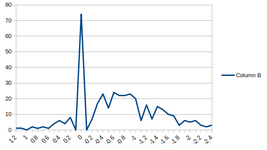- Messages
- 6,824
- Reactions
- 17,613
Now I wouldn't normally do this for 5.56 because I don't have a precision 5.56 rifle and what I have I use for plinking. But I've got time on my hands and so after cleaning up some once fired IMI brass, I weighed each piece against a reference cartridge on a digital scale. I cut the primer pocket crimp with a cutter -- I don't have a swager so some of the variation could have come from slight differences in how well I reamed out the primer pocket crimp. I trimmed the shells and then deburred and chamfered. I randomly selected a shell and put that on my digital scale and tared that. I used that as a reference for all other shells and luckily, I just happened to choose the most numerous weight. My scale weighs to the hundreth of a grain but only in 2/100th increments. For my sorting, I used the weight displayed to the tenths and dropped the hundreths amount.
The results (weight difference in grains | count):


The results (weight difference in grains | count):













